Spanning 460 kilometers in the heart of southern Germany, the Romantic Road is your gateway to picturesque landscapes, fairytale castles, and captivating historic towns. Imagine winding roads set against the backdrop of majestic mountains, dense green forests, and architectural wonders that tell tales of centuries gone by.
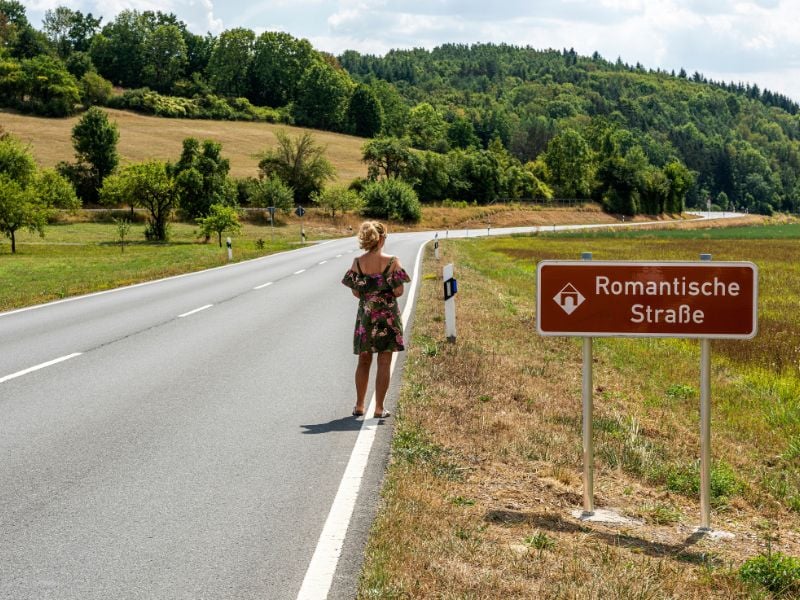
With detailed itineraries, information on must-see stops like Neuschwanstein and Rothenburg Ob Der Tauber, and tips for exploring the natural beauty and culinary delights of the region, this article is the perfect companion for a memorable road trip along the Romantic Road.
Good To Know
- The Romantic Road was constructed in the 1950s to boost tourism and revive the economy after World War II.
- The route spans over 350 kilometers from Würzburg to Füssen, showcasing picturesque landscapes, charming towns, and historic sites.
- Travelers can plan their itinerary with plenty of accommodation options and must-visit stops like Rothenburg ob der Tauber and Füssen.
- The road offers opportunities to explore fairytale castles like Neuschwanstein and Hohenschwangau, as well as indulge in natural beauty and culinary delights along the way.
Navigating the Romantic Road
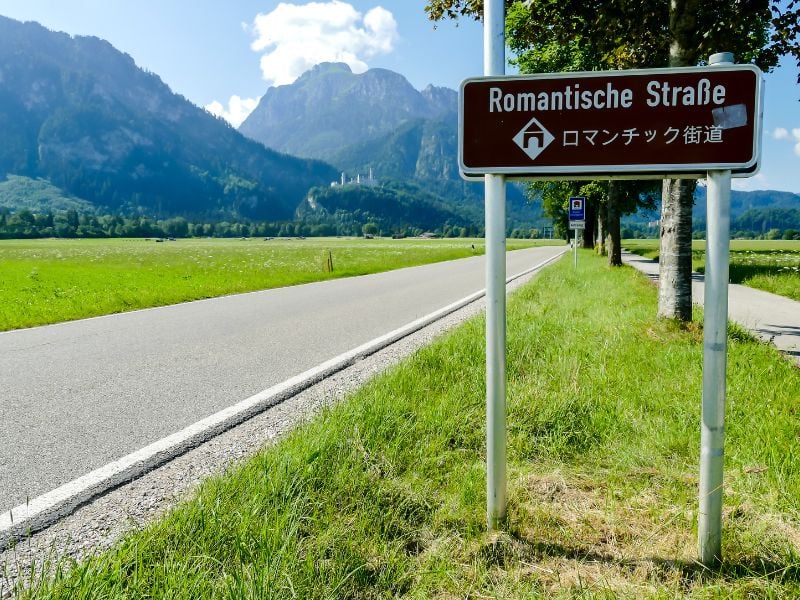
Travel Direction Matters: Most adventurers prefer starting in the north and making their way south, culminating in the iconic Neuschwanstein Castle. The journey begins in Würzburg, a quaint town located 119km southeast of Frankfurt, and ends in Fussen, situated 132km southwest of Munich.
Choosing Your Wheels: To truly soak in the essence of the Romantic Road, consider renting a car. Major cities like Frankfurt and Munich, conveniently located at either end, offer plenty of rental options. With your own set of wheels, you have the liberty to explore at your own pace and chase spontaneous detours.
Best Time: The allure of the Romantic Road is no secret, making it a magnet for travelers during summer. However, if you’re keen on a more serene experience, consider visiting during the spring, fall, or even winter (but preferably outside of the Advent season). Fewer crowds mean more authentic interactions, not to mention off-season deals on accommodations.
Don’t Be Daunted by the Distance: While the official Romantic Road map boasts 28 stops, remember that many of these towns are quaint and compact. Instead of racing from one stop to the next, consider immersing yourself deeper in a few chosen spots. Quality over quantity can enhance your experience tenfold.
Old-School Navigation: Digital may be the norm, but there’s something uniquely satisfying about navigating with a physical map. Secure one from the Tourist Office in Würzburg and let it guide you, complementing your digital aids. It’s not just a tool, but a keepsake of an unforgettable journey.
Getting Around the Romantic Road
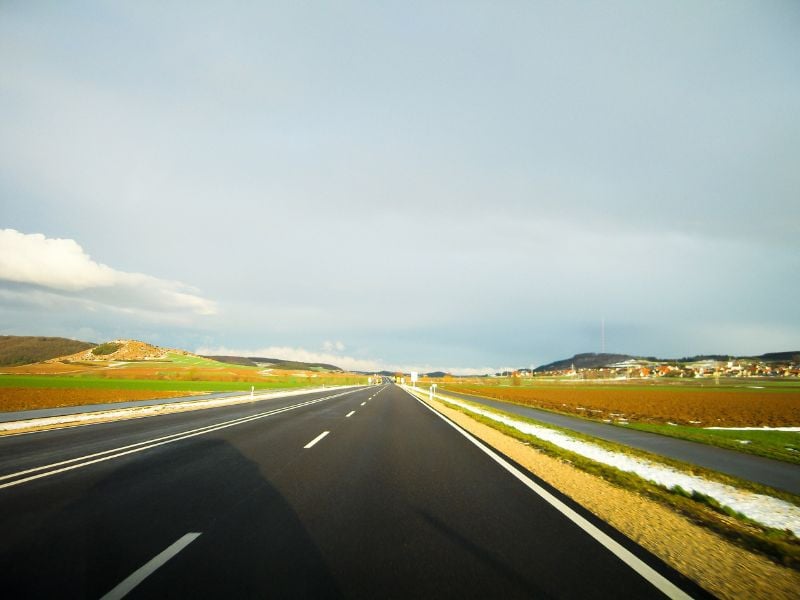
By Car:
- Experience: Driving the Romantic Road offers unparalleled freedom and flexibility. Travel at your own pace, detour to hidden gems, and stop spontaneously for picturesque moments.
- Rental Tip: Car rentals are available at Frankfurt Airport, with a range of options to suit different budgets and preferences.
- Route: Begin your journey at Würzburg by taking the Autobahn B3. The Romantic Road is well-signposted, ensuring a seamless drive through Germany’s historical heartland.
By Bicycle:
- Experience: Embrace the beauty of the Romantic Road intimately. With dedicated cycleways, you can pedal through quaint villages, lush meadows, and beside historical landmarks.
- Tip: Germany’s weather can be variable. Always check forecasts ahead of your journey and pack layers. There are also bike rental shops along the route if you don’t have your own.
- Safety: The Romantic Road is popular, so be cautious of vehicular traffic in certain sections. Always wear protective gear, including a helmet.
By Bus or Train:
- Experience: Germany’s rail network is renowned for its efficiency and comfort. While the train might not cover every nook of the Romantic Road, it offers a relaxed way to transit between major towns. Bus tours, on the other hand, often provide guided insights into the region’s history and cultural significance.
- Booking: Tickets for trains can be booked via the Deutsche Bahn website or at stations. For bus tours, consider checking with local tourist offices for recommended operators.
- Advantage: Opting for public transport or bus tours can be a stress-free way of traveling, especially for those unfamiliar with driving in Germany or tight on time.
Map Of Germany’s Romantic Road
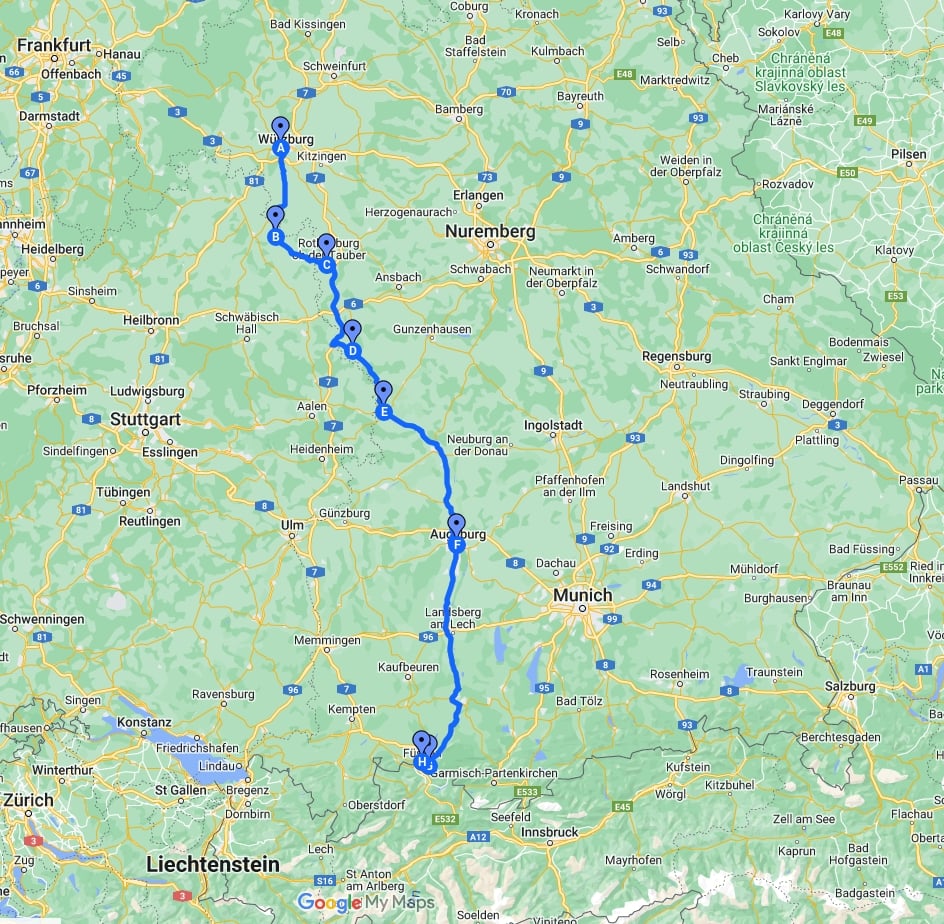
The History of the Romantic Road
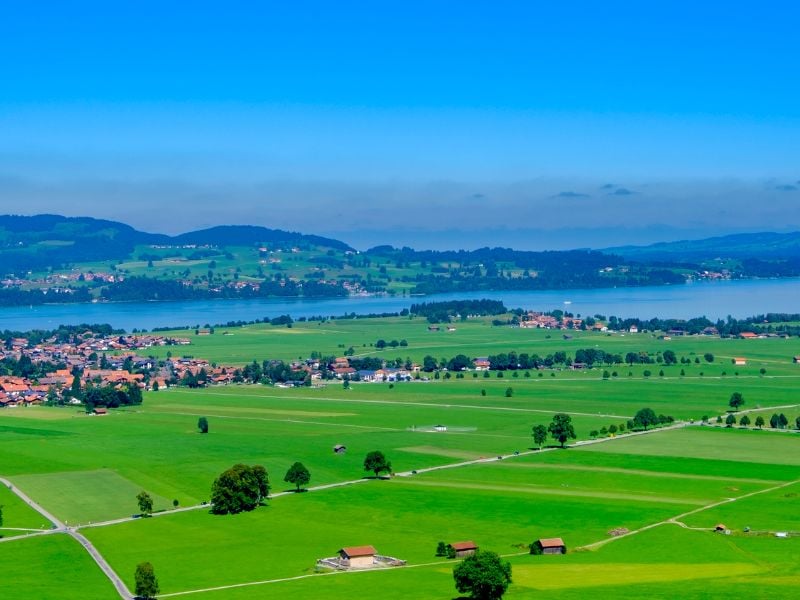
The history of the Romantic Road begins with the construction of the first section in the 1950s. This iconic route, stretching over 350 kilometers from Würzburg to Füssen in Germany, holds great historical significance and cultural heritage.
Originally, the road was created to boost tourism and revive the economy in the post-war era. It was designed to showcase the picturesque landscapes, charming towns, and historic sites of the region. The Romantic Road quickly gained popularity among travelers, both domestic and international, due to its unique blend of natural beauty and cultural treasures.
Today, it continues to attract visitors who are enchanted by the well-preserved medieval towns, fairytale castles, and vineyard-clad hills that make up this enchanting route. The Romantic Road isn’t just a road; it’s a journey through time and a testament to Germany’s rich history and cultural heritage.
Best Seasons for Germany’s Romantic Road Adventure
Bavaria’s Prime Months:
June to September is traditionally recognized as an ideal period to explore Bavaria, Southern Germany’s crown jewel. However, it’s wise to remember that these months also pull in the maximum number of travelers. For those eager to enjoy the true essence of the Romantic Road without the summer rush, book your accommodations way in advance.
Discovering Off-Peak Bavaria:
Venturing in late spring or early autumn could be your secret to experiencing a more tranquil and authentic Bavaria. These shoulder months promise fewer travelers and more economical prices. As a pro-tip, while on the Romantic Road, consider a side trip to explore the wonders of Garmisch Partenkirchen.
Your Journey Along the Romantic Road
Crafting Your Timeline:
The duration you allocate to Germany’s Romantic Road truly molds the experience. A common suggestion is a minimum of four days. This span you to see the major attractions, take is the region’s charm. However, for those with the luxury of time, adding a day or two could present opportunities to unearth even more local treasures.
Short Stays:
For adventurers strapped for time, prioritizing is key. Rothenburg ob der Tauber’s rich history and the fairy-tale-like Neuschwanstein Castle, nestled just beyond Fussen, are absolute must-visits.
Planning Your Itinerary: Best Stops Along the Romantic Road
Often overlooked, but essential, is the task of planning your itinerary and deciding on the best stops along the Romantic Road.
When it comes to accommodations, there are plenty of options to choose from. From cozy bed and breakfasts to luxurious hotels, each town along the route offers its own unique charm and hospitality.
Travelers can indulge in the quaint atmosphere of Rothenburg ob der Tauber, or enjoy the picturesque landscapes in Füssen.
For those seeking cultural experiences, local festivals are a must-visit. From the world-renowned Oktoberfest in Munich to the charming wine festivals in Würzburg, there’s something for all.
It’s recommended to research the dates of these festivals and plan your visit accordingly to fully Enjoy the local traditions and celebrations along the Romantic Road.
Navigating the Romantic Road of Germany
Stretched over 460km, the Romantic Road provides an array of experiences tailored for both brief getaways and extended tours. Your exploration’s duration will depend largely on the attractions you prioritize.
Dive deep into both Germany’s bustling cities and serene countryside; a week might be the sweet spot for the most immersive experience.
Here are some proposed itineraries that cater to different travel durations and interests:
Day Escape from Munich:
- Neuschwanstein Castle: Even if pressed for time, the fairy-tale allure of Neuschwanstein Castle is within reach. This 19th-century palace, nestled in the Bavarian Alps, was the inspiration behind Disney’s Sleeping Beauty Castle. As one of Germany’s most visited tourist destinations, it’s an ideal day trip from Munich.
2-Day Romantic Road Jaunt:
If your window is tight but you’re keen on capturing the essence:
- Füssen: Known for its historic old town, majestic castles, and its proximity to the Bavarian Alps. The High Castle of Füssen provides panoramic views of the city and the Alps.
- Rothenburg: A medieval town frozen in time, Rothenburg offers attractions like the Medieval Crime Museum and the iconic Plönlein — a spot where two of the town’s picturesque roads meet.
Deep Dive: 4-Day Romantic Road Odyssey:
Four days allow a blend of popular stops and lesser-known treasures:
- DAY 1: Würzburg to Rothenburg
Begin in Würzburg with its opulent Würzburg Residence, a baroque palace and a UNESCO World Heritage Site. It houses the largest ceiling fresco ever painted, a masterpiece by Tiepolo. Rothenburg promises a step back in time with its preserved medieval architecture. - DAY 2: Rothenburg to Nördlingen
Explore more of Rothenburg before heading to Nördlingen. Unique in its geography, Nördlingen sits in the Ries Crater, a meteorite impact site, and is one of the only towns in the world with a completely preserved city wall. - DAY 3: Nördlingen through Augsburg to Füssen
Venture through Dinkelsbühl, a perfect representation of German urban architecture, brimming with half-timbered buildings. Augsburg, one of Germany’s oldest cities, is worth a pause for its Roman-era origins and vibrant cultural scene. - DAY 4: Füssen’s Splendors
Dedicate this day to Füssen’s architectural marvels, including Hohenschwangau Castle, King Ludwig II’s childhood residence. Depending on your mood and the weather, consider relaxing by Lake Forggensee or exploring Füssen’s historic old town.
Top Stops Along Germany’s Romantic Road
Germany’s Romantic Road boasts an array of captivating towns and attractions, each with its own unique charm and historical significance. Below are some of the must-visit highlights:
Würzburg: Bavaria’s Wine and Architectural Gem
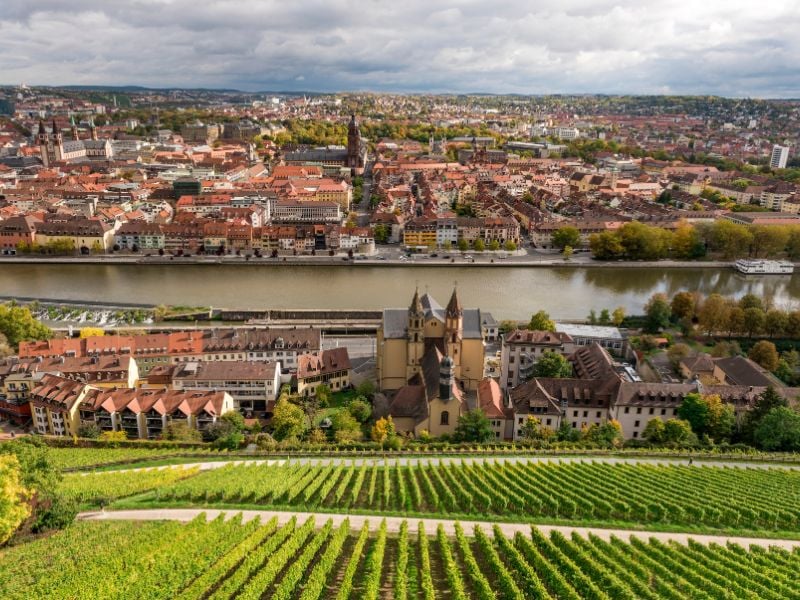
Resting amidst lush vineyards, Würzburg is a harmonious blend of history and hedonism. It’s an ideal destination for those yearning to revel in rich architecture by day and indulge in delectable wines by night.
- Würzburger Residence: This architectural wonder effortlessly blends Baroque, Rococo, and Neoclassical styles. Notable features include its grand staircase, ornate chapel, and the resplendent Imperial Hall. The surrounding manicured gardens offer a serene escape.
- Old Main Bridge (Alte Mainbrücke): A marvel from the 16th century, this bridge is not just a passage but a piece of art. Adorned with statues of saints, it echoes the charm of Prague’s iconic Charles Bridge. The panoramic views of the town from here are a photographer’s delight.
- Marienberg Fortress: Perched atop a hill, just a stone’s throw from the city center, this fortress provides sweeping views of Würzburg. The gardens that surround it are a peaceful retreat, perfect for those looking to soak in some tranquility.
- Royal Residenz: A testament to Würzburg’s rich history, this UNESCO World Heritage Site stands tall as one of Europe’s grandest royal palaces. Though scarred by World War II during the Würzburg bombing, meticulous restoration efforts have breathed life back into this majestic structure.
Further Exploration: For an in-depth experience of Würzburg, consider diving deeper into its offerings. Numerous guides and articles detail the myriad attractions this gem on the Romantic Road has to offer.
Rothenburg ob der Tauber
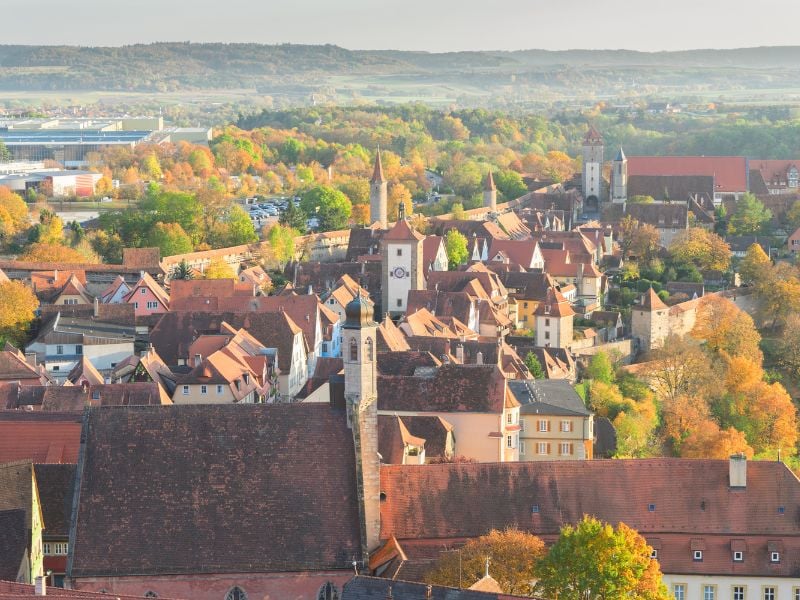
One of the most charming stops along the Romantic Road is Rothenburg Ob Der Tauber, where visitors can step back in time and experience the medieval atmosphere of this well-preserved town.
Rothenburg ob der Tauber, located in Bavaria, Germany, is known for its historical charm and traditional architecture. The town’s rich history can be seen in its well-preserved city walls, cobblestone streets, and half-timbered houses.
Perched atop a scenic hill along the Romantic Road, Rothenburg ob der Tauber stands as a vivid portrayal of medieval Germany. The town is renowned for its meticulously preserved cobbled streets, half-timbered houses, and an atmosphere that resonates with tales of yore.
Rothenburg’s cinematic charm hasn’t gone unnoticed by the film industry. The town served as a backdrop for scenes in “Harry Potter and the Deathly Hallows” and the classic “Chitty Chitty Bang Bang.” Plus, the enchanting settings of Rothenburg influenced the visual narratives of the animated film “Pinocchio.”
As you wander through the town, they can explore the medieval marketplace, visit the impressive St. James Church, and admire the stunning views from the top of the town wall. Rothenburg ob der Tauber offers a unique opportunity to take in the past and appreciate the beauty and authenticity of a bygone era.
Exploring Rothenburg:
- Elevated Views: One of the most rewarding experiences in Rothenburg is a stroll atop its medieval wall. This protective barrier from ancient times now offers visitors panoramic views of the town and the surrounding countryside.
- Historic Town Hall: Venturing to the top of the town’s historic Town Hall rewards visitors with a sweeping perspective of the region, painting a picture of how the town fits into the broader Bavarian landscape.
- Nightly Patrols: To delve deeper into Rothenburg’s history, join the evening walk led by the town’s night watchman. This unique experience allows visitors to witness the illuminated city center in the company of a guide who shares tales of Rothenburg’s storied past.
For those mapping out their stay along the Romantic Road, an overnight halt in Rothenburg comes highly recommended. Although the town buzzes with activity during the day, especially in the peak summer and Christmas seasons, evenings offer a serene atmosphere. Staying the night provides an opportunity to truly absorb the town’s magic after the day-trippers depart.
Dinkelsbühl
Established in the 8th century, Dinkelsbühl stands as a testament to medieval Bavarian architecture and history, drawing parallels to the famed Rothenburg ob der Tauber. However, what sets Dinkelsbühl apart is its more tranquil atmosphere, shielded from the heavy influx of travelers.
Historical Legacy: Dinkelsbühl’s historical sites are pristine and deeply authentic, owing to its fortunate preservation during the World Wars. One of the rare casualties was a window in the Gothic-style St. George’s Cathedral. As you meander through the town, the presence of stately churches, elegant townhouses, and traditional timbered cottages weaves a tale of its storied past.
Architectural Highlights:
- The Old Town Fortifications: Dominating the landscape of Dinkelsbühl are its 16 fortified towers, complemented by several intact city gates. An original ring wall encapsulates the town, offering insights into medieval defense mechanisms.
- Weinmarkt & Surroundings: At the heart of the town lies the Weinmarkt, a bustling square lined with specialty shops and inviting cafes. This area is perfect for a leisurely stroll, offering opportunities to admire the town’s blend of architectural styles and pick up unique souvenirs.
For travelers looking for a more intimate experience of Germany’s medieval history without the usual crowds, Dinkelsbühl presents itself as an enticing alternative to its more famous counterparts.
Augsburg
Boasting over 2,000 years of history, Augsburg stands as Bavaria’s oldest city and ranks second in Germany’s lineup of ancient cities. It has left indelible marks on Europe’s history with its immense wealth and influence.
Key Attractions:
- City Center: The heart of Augsburg reflects its Renaissance roots. Wander through and you’ll spot architectural marvels that hark back to the city’s prosperous days.
- City Hall: This isn’t just another municipal building. Inside, the “Golden Chamber” awaits, a testament to Augsburg’s opulent past.
- Perlach Tower: A must-visit for those keen on panoramic views and historic structures.
- Maximilianstrasse: Recognized as southern Germany’s premier boulevard, it’s lined with significant landmarks including the Mercury and Hercules fountains, Schaezler Palace, and the twin St. Ulrich churches.
Beyond Historical Monuments: While the city reverberates with history, modern Augsburg thrives as a buzzing university town. It caters to a spectrum of interests, from traditional pubs offering a taste of local brews, to theaters that showcase contemporary talents, and museums that merge the old with the new. For any traveler, Augsburg promises both education and entertainment.
Pfaffenwinkel
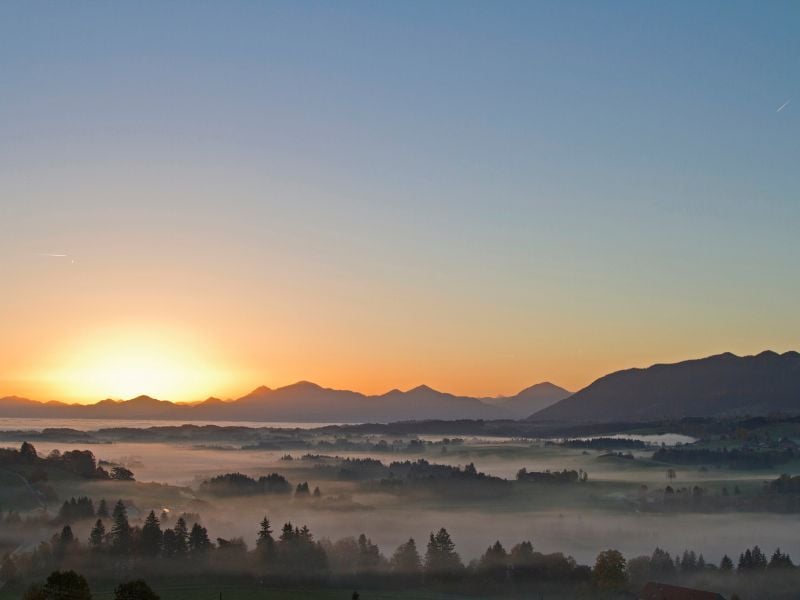
Located between the towns of Lech und Loisach, Pfaffenwinkel stands out for its unique combination of natural beauty and religious significance. This area boasts approximately 160 churches and monasteries, marking it as a significant destination for pilgrims.
The origin of its name, “Pfaffe”, which translates to “priest”, reflects the historical prominence of monasteries in land use and management in this region.
The Romantic Road, makes its way through Pfaffenwinkel, ensuring that visitors pass through notable spots like Schongau, Peiting, Rottenbuch, Wildstein, and Steingaden.
A must-visit attraction in Pfaffenwinkel is the Wieskirche, located near Steingaden. It’s not just any church – it’s a UNESCO World Heritage Site known for its intricate rococo architecture. If you’re looking to combine scenic beauty with historical exploration, spending time in this church set amidst the south Bavarian countryside can be a rewarding experience. Plus, considering its status as a pilgrimage site, it provides insight into the region’s religious practices and traditions.
For those visiting Pfaffenwinkel, it’s advisable to wear comfortable footwear, as the region invites exploration by foot, allowing travelers to fully absorb its cultural and natural offerings.
Neuschwanstein Castle
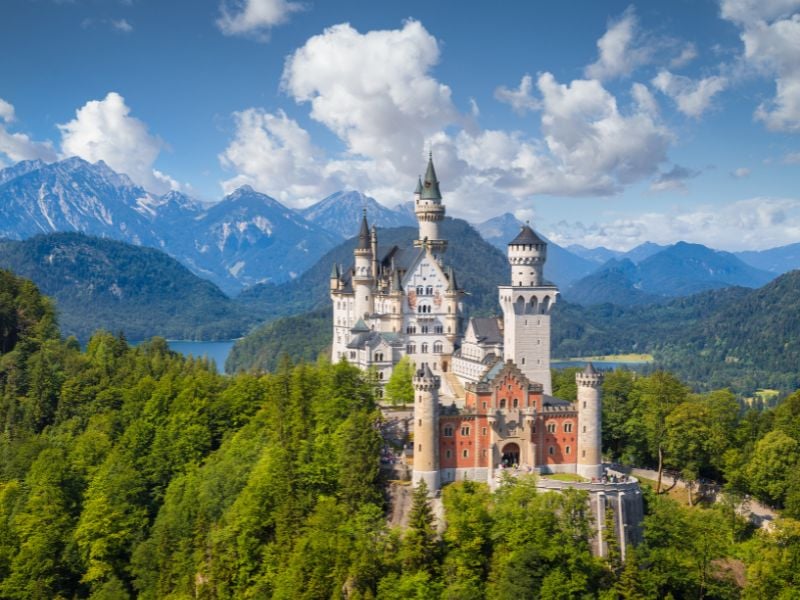
Recognized globally and often referred to as the “Walt Disney Castle” or “Cinderella Castle”, Neuschwanstein Castle stands out as an emblem of German romanticism. This 19th-century palace is located prominently above the village of Hohenschwangau near Füssen in southwest Bavaria. Its striking architecture and historical relevance make it a must-visit location in Bavaria.
Key Information for Visitors:
- Popularity: Among the myriad of tourist attractions in Bavaria, Neuschwanstein Castle tops the list. In peak summer months, it draws an impressive crowd, sometimes up to 6,000 visitors daily. This influx can be overwhelming for the otherwise tranquil town of Hohenschwangau.
- Best Time to Visit: If tranquillity is what you’re after, consider a winter visit. Not only will you dodge the dense summer crowds, but you’ll also get to experience the castle set against a serene snowy backdrop.
- Touring the Castle: To truly appreciate the intricacies of the castle’s interior, you must take a guided tour. Adult tickets are priced at 13 Euros and come with a designated time slot. Due to the castle’s popularity, it’s prudent to book tickets in advance. You can make reservations online, but remember to do it at least two days ahead of your intended visit. Booking closes after 3 pm (German local time), so plan accordingly.
Additional Tip: Seasons can significantly impact the overall experience. A winter visit offers a different charm, with the castle blanketed in snow and fewer travelers around. If you’re inclined towards a quieter, picturesque experience, consider checking out resources on winter visits to Neuschwanstein Castle.
Füssen
Situated at the tail end of Germany’s Romantic Road, Füssen is a quaint town with a rich 700-year history. Its strategic location, just a stone’s throw away from the renowned Neuschwanstein Castle, makes it a popular choice for travelers to bed down for the night.
Here’s What You Can Expect:
- Brief Exploration: Füssen, though charming, can be explored relatively quickly. The town serves as a gateway to the broader attractions of the region.
- Historic Attractions: The Old Town of Füssen is a trove of historic landmarks. Wander its lanes to experience the atmosphere and sights like the High Castle of Füssen (Hohes Schloss), an assortment of churches, and the former Benedictine Abbey of St. Mang. The town’s center showcases vibrant buildings, many enhanced with frescoes.
- Natural Beauty: Beyond the town’s borders lie its true gems. A short walk south will lead you to Lechfall, a manmade waterfall where the Lech River cascades into the Lech Gorge.
- Lakeside Retreat: If your schedule allows, don’t miss the opportunity to visit Alpensee, a stunning lake nearby. During summer, the lake is bustling with activities like boating, and its shores become a popular spot for sunbathing and swimming. Yes, there’s even a beach!
Tip for Travelers: Given its proximity to Neuschwanstein Castle and other regional attractions, many use Füssen as a base. If you’re contemplating an overnight stay, you’ll be in good company.
Natural Beauty of the Romantic Road
you can enjoy the natural beauty of the Romantic Road by exploring its picturesque landscapes and breathtaking views. This scenic route offers a variety of outdoor activities and opportunities to appreciate the stunning natural landscapes. Here are some highlights:
- Hiking: The Romantic Road is surrounded by lush forests and rolling hills, making it a perfect destination for hiking enthusiasts. There are numerous well-marked trails that cater to different skill levels, allowing visitors to embrace the beauty of the region on foot.
- Cycling: With its well-maintained bike paths, the Romantic Road is a paradise for cyclists. Rent a bike and pedal through charming villages, vineyards, and meadows, enjoying the fresh air and stunning vistas along the way.
- Boating: The Romantic Road is dotted with rivers and lakes, providing opportunities for boating and sailing. Rent a canoe or take a leisurely boat tour, and experience the tranquil beauty of the waterways.
- Wildlife Watching: The natural landscapes along the Romantic Road are home to diverse wildlife. Keep your eyes peeled for deer, foxes, and various bird species as you explore the region.
Immersing oneself in the natural beauty of the Romantic Road is a must-do for nature lovers and outdoor enthusiasts alike.
What To Eat On the Romantic Road
Travelers can satisfy their taste buds and explore the local cuisine by indulging in culinary delights along the Romantic Road. This iconic route in Germany not only offers breathtaking landscapes and historic towns but also a rich culinary heritage.
Along the way, you can enjoy the region’s culinary traditions and sample a variety of local delicacies. From hearty Bavarian dishes to sweet treats, the Romantic Road showcases the best of German gastronomy.
Some must-try dishes include schnitzel, sausages, pretzels, and Black Forest cake. To enhance your culinary experience, make sure to visit traditional beer gardens, cozy taverns, and local bakeries.
Don’t forget to pair your meal with a glass of regional wine or a refreshing beer. Set out on a culinary journey along the Romantic Road and discover the flavors that make this region so special.
| Local Delicacies | Culinary Traditions |
|---|---|
| Schnitzel | Bavarian Cuisine |
| Sausages | Beer Gardens |
| Pretzels | Traditional Taverns |
| Black Forest Cake | Local Bakeries |
| Regional Wine | Refreshing Beer |
Nuremberg
Although Nuremberg is a vibrant city, it also carries a dark past. Known for its medieval architecture, rich history, and lively festivals, Nuremberg attracts visitors from all over the world.
However, it’s impossible to ignore the city’s role in the Nazi era. Nuremberg served as the site for the Nazi Party rallies and the infamous Nuremberg Trials after World War II. The city’s dark history is evident in the remains of the Nazi Party Rally Grounds, which include the colossal Zeppelin Field and the Congress Hall.
Today, Nuremberg honors its past by preserving these historical sites and offering educational exhibits. Despite its dark history, Nuremberg remains a vibrant city that’s proud of its cultural heritage and strives to create a better future.
Tips for a Memorable Romantic Road Trip
To make the most of their Romantic Road trip, travelers should plan ahead and pack accordingly. Here are some tips for planning a memorable romantic road trip:
- Research the route: Study the Romantic Road route and the attractions along the way to decide which ones you want to visit and how much time to allocate to each.
- Choose the right time: Consider traveling during the shoulder season, when the crowds are smaller and the weather is pleasant.
- Pack essentials: Don’t forget to pack comfortable clothing, walking shoes, a map or GPS, and a camera to capture the beautiful scenery.
- Plan romantic activities: Research and book romantic activities such as wine tasting, candlelit dinners, and scenic hikes to make your road trip extra special.
Common Questions
Are There Any Special Events or Festivals Along the Romantic Road That I Should Know About?
Special events and festivals along the Romantic Road in Germany are worth knowing about. These events add vibrancy and excitement to the journey. Visitors can experience cultural celebrations, music festivals, and traditional markets, enhancing their travel experience.
What Are Some Recommended Activities for Families Traveling Along the Romantic Road?
Family friendly activities along the Romantic Road include exploring medieval castles, visiting charming towns like Rothenburg, and enjoying outdoor adventures in the Bavarian Alps. The best kid-friendly attractions include Playmobil FunPark and Legoland Germany.
Are There Any Guided Tours Available Along the Romantic Road?
Yes, there are guided tours available along the Romantic Road. These tours offer numerous benefits such as expert guides, convenient transportation, and a curated itinerary that ensures visitors get the most out of their experience.
What Are Some Lesser-Known Attractions or Hidden Gems Along the Romantic Road?
Hidden gems and off the beaten path attractions can be found along the Romantic Road. These lesser-known spots offer a unique and authentic experience for travelers looking to explore beyond the popular tourist destinations.
Are There Any Specific Driving or Parking Regulations That I Should Be Aware of When Traveling Along the Romantic Road?
When traveling along the Romantic Road, it is important to be aware of the driving and parking regulations. These regulations help ensure safe and orderly traffic flow, as well as protect the historical sites and natural beauty of the region.
The Sum Up
The Romantic Road in Germany is a picturesque route that winds through charming towns, fairytale castles, and breathtaking landscapes.
From the fairytale castles of Neuschwanstein and Hohenschwangau to the charming town of Rothenburg Ob Der Tauber, there are plenty of stops along the way to captivate visitors.
Trying the culinary delights and exploring the wine region of Würzburg adds another layer of enjoyment.
With a little planning and an adventurous spirit, a trip along the Romantic Road is sure to create lasting memories.
